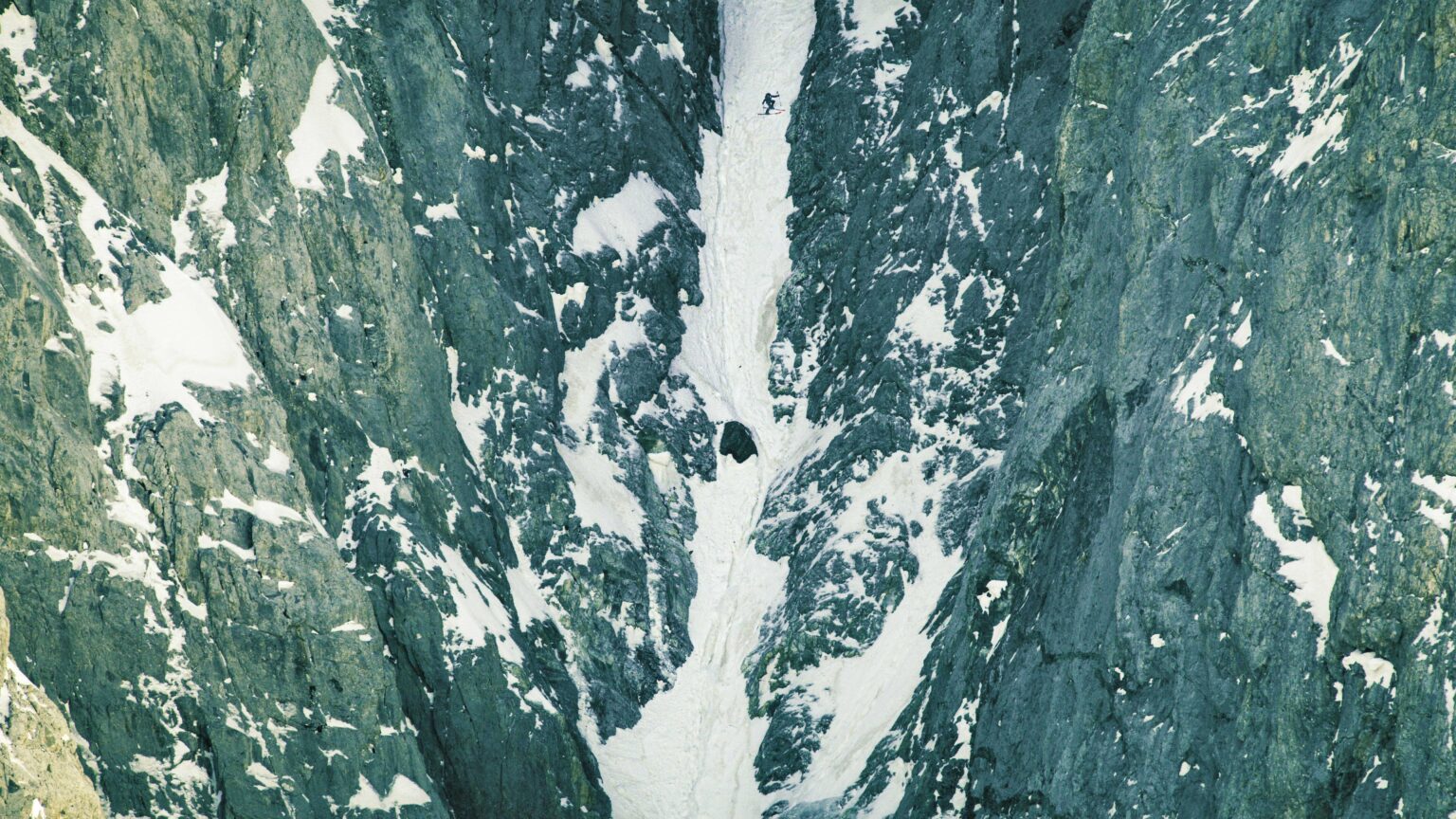Incredible Ski Shots | Couloir de Gaube, Vignemale


Vignemale, the summit of the Pyrenees, is a mass of rock with just a crease of snow running down it. At first glance it’s easy to think maybe, just maybe, with some bravery pills and expert side-slipping you too could make it down the impressive couloir. But examine the photo more carefully (look at the angle of skier Pierre Hourticq’s legs, and the absurdly tight, icy, steep mid-section by the giant boulder), or better still watch the accompanying film Sauvatge, and unless you’ve really been on the sherry, the reality will hit you that this is a monster even for professional skiers.
“I’ve been thinking about it, dreaming about it for a long time, something like five years,” says Scott-sponsored Pierre, who grew up in nearby Arette. “The most important thing is to be able to ski it in good condition,” he says, “and that is difficult in the Pyrenees. If you want to do it, you have to live here, be ready, and see the conditions coming…”
As to the actualities of taking on this narrow, ever-so-sheer corridor of white, like any legendary quest, rumours and exaggerations abound. With some reports claiming it’s as long as 900m, and as steep as 60°.
“It’s definitely one of the most impressive routes in the Pyrenees,” says Pierre (who took on the slope with Helias Millerioux and fellow Pyrenean FWT hero Victor de Le Rue). “I’d say it’s a 700m-long, straight couloir, with a regular inclination around 50-55°… and there are many manipulations of rope – it’s not freeride, more alpine skiing.”
Aside from the ropes (most definitely an issue for those of us who are not mountain guides like Pierre) the aspect of 3298m Vignemale also presents a problem. In short, you have to get the timing (as well as the snow) just right.
“It was impossible to pass so we decided to go to the top by the other way of the mountain and ski without repérage.” Which in short means do it blind.
“There is a big wall on the side, and when the sun is coming stones are falling onto the couloir de Gaube,” says our man whose crew triumphed last April. “So you have to be efficient with rope manipulation and you have to start skiing it no later than 7am.”
To get to this point should be the easy part. You just climb where you want to ski, checking condition and snow as you go à la Cody Townsend in The Fifty Project (with Vignemale’s north face echoing plenty of the American’s most hard won and memorable episodes, in that it’s not only a beast, but also rarely in condition.)
On this occasion, the problem was a large rimaye (crevasse) at the bottom of the couloir. “It was impossible to pass,” says Pierre, “so we decided to go to the top by the other way of the mountain and ski without repérage.”
Which in short means do it blind (without ‘reconnaissance’ is the direct translation). “It brings a little more stress, says the Pyrenean in understated fashion. “We do not know the difficulties that we will encounter. And to sum up, we put around four hours to climb up and two hours to ski down. That’s long for a ski descent,” he says (especially when you factor in the required night before and lugging of supplies to Refuge des Oulettes, where you must stay to be in position for the line).
As to where the feat ranks in his, frequent ski partner Helias’, or Freeride World Tour overall winner Victor’s list of achievements, only they know. With the latter missing in action when Fall-Line tried to make contact, Monsieur Millerioux promising words that never came, and Pierre confirming that he did not have “anything like a Top 5 list of hardest descents”, but this was certainly “one of the most stressful couloirs” he’d skied.
When pressed, he did confirm that these sort of challenges are a whole lot better when you are down and out of danger, rather than in the moment, and that, well, in the right conditions he would definitely give it another try.
“I hope one day with powder,” he says. An aspiration that’s echoed by every skier. Just maybe not on this face!
‘Sauvatge’, Episode 4 of Scott’s ‘Freedom To Explore’ Series, featuring Pierre Hourticq, Helias Millerioux and Victor de Le Rue is out now.